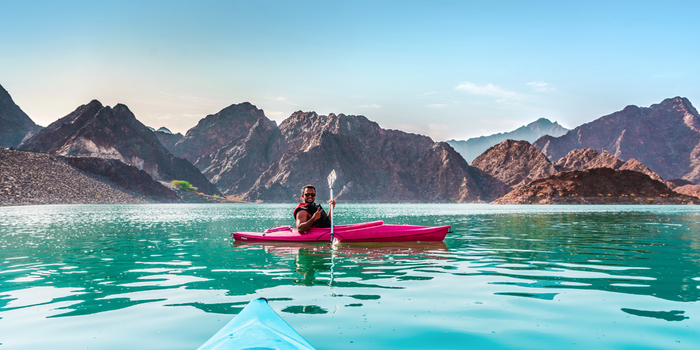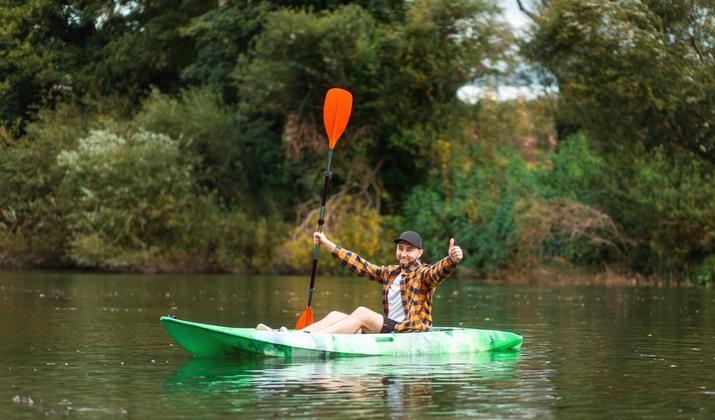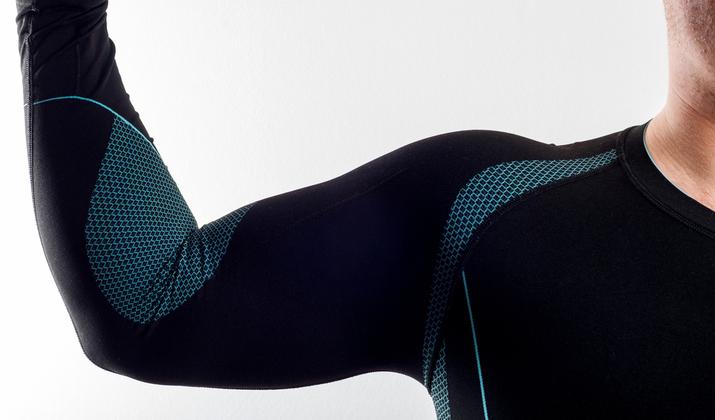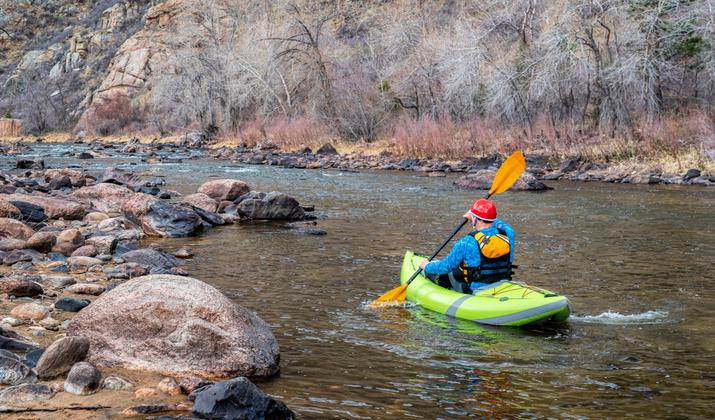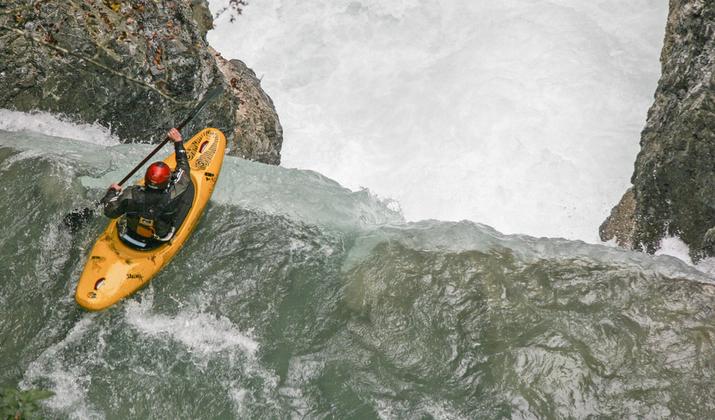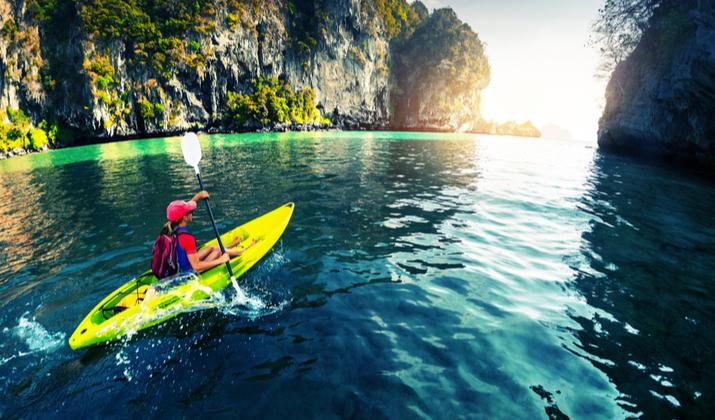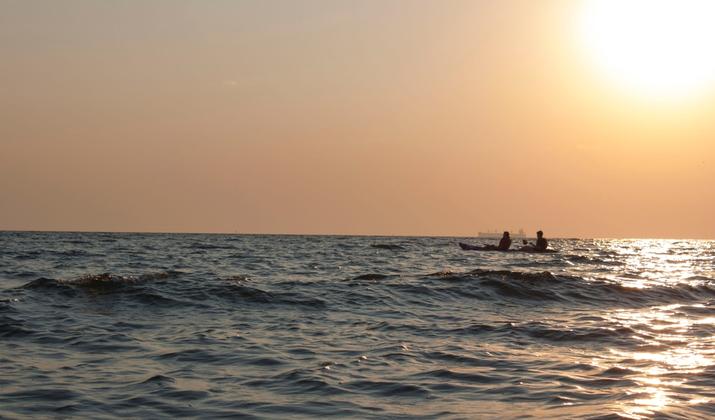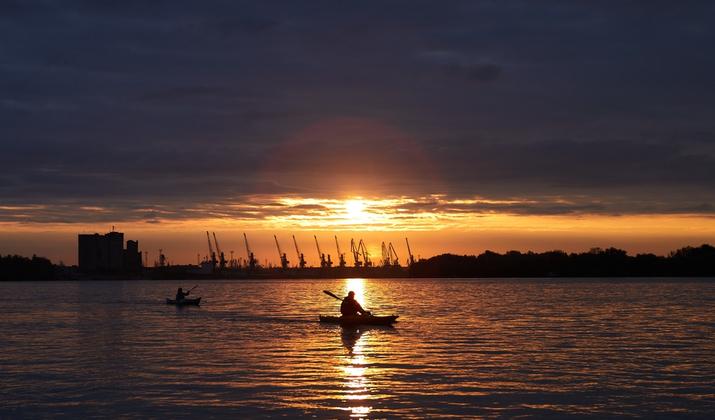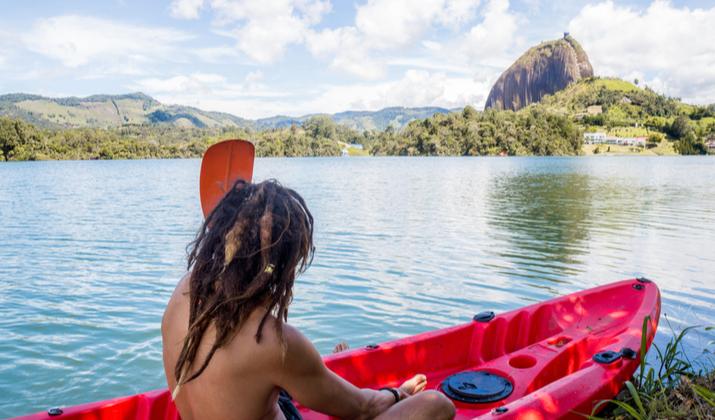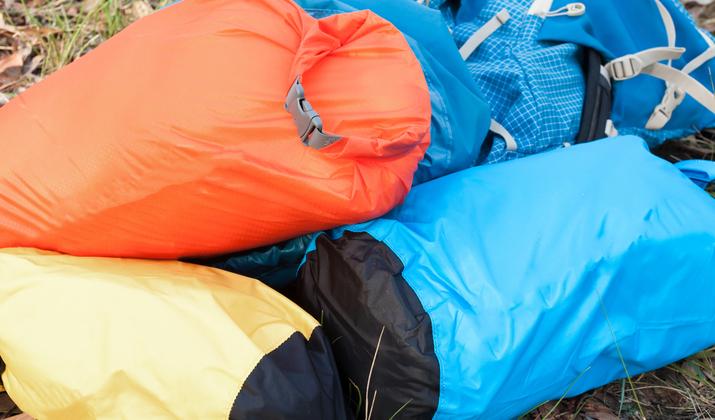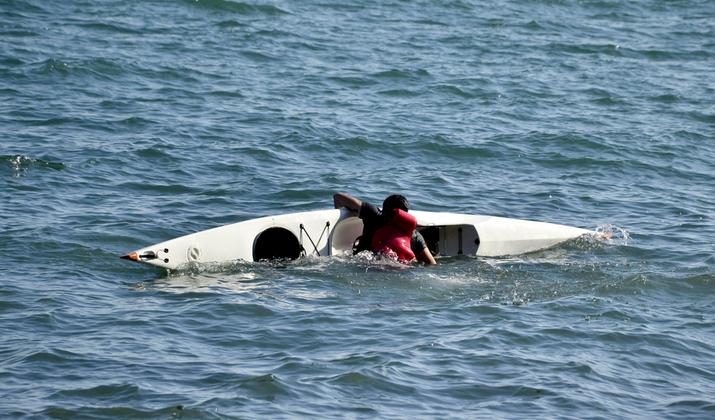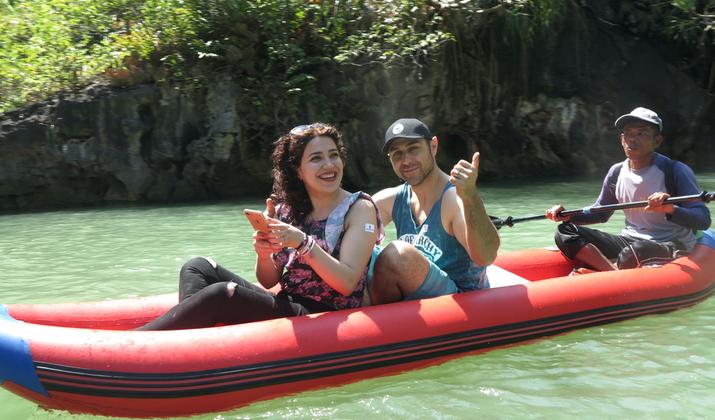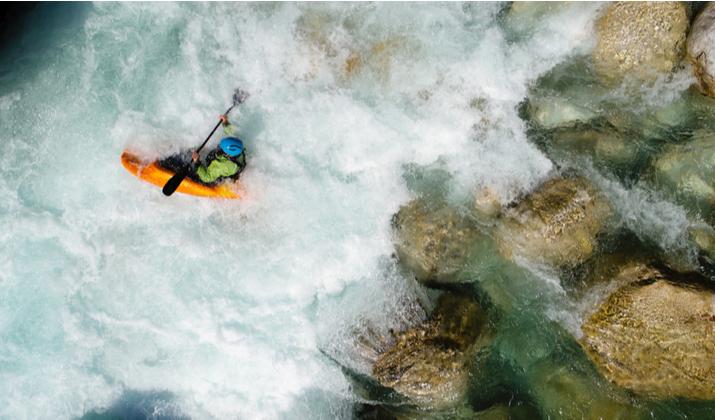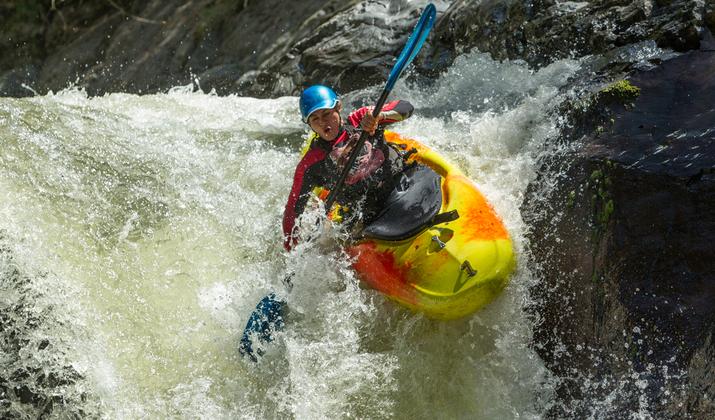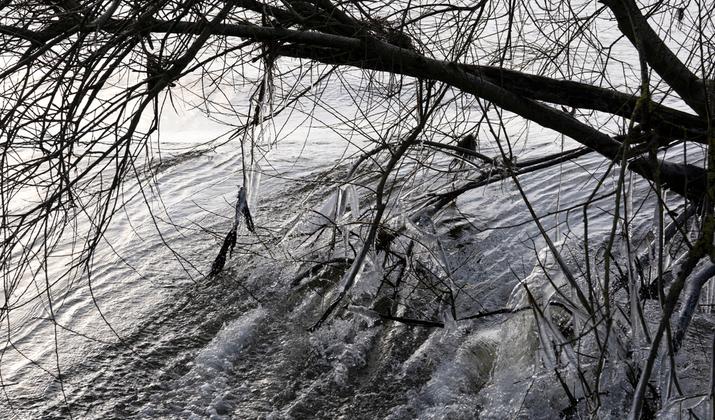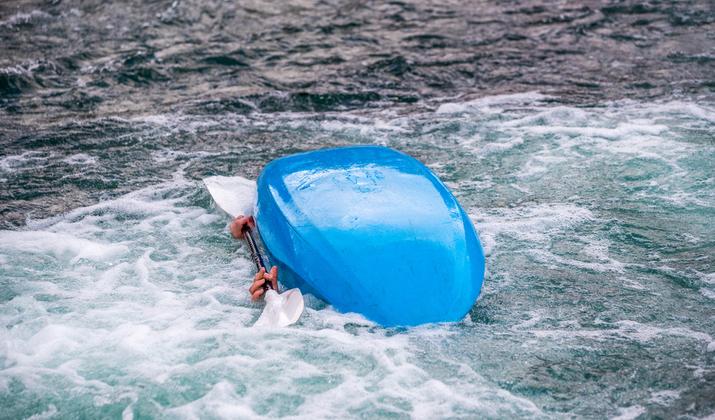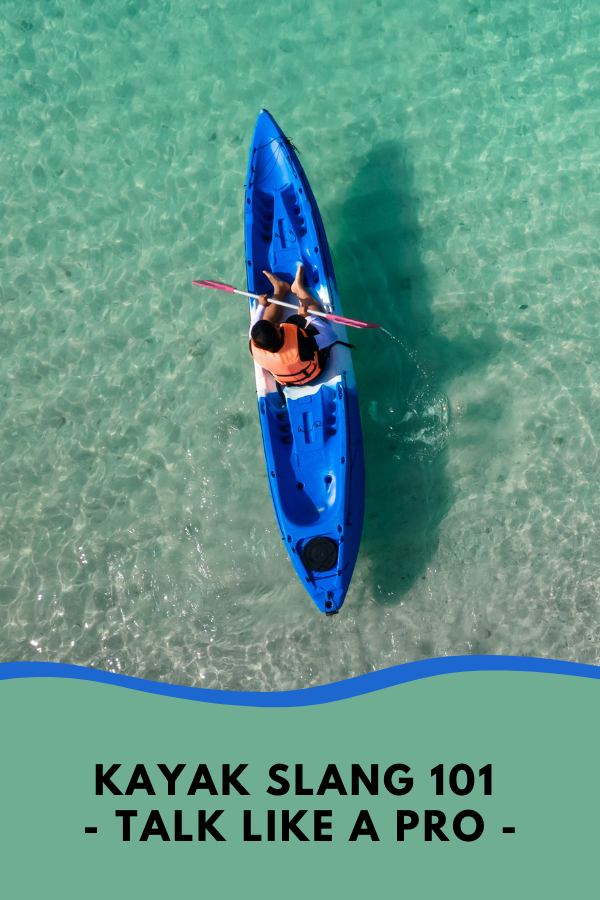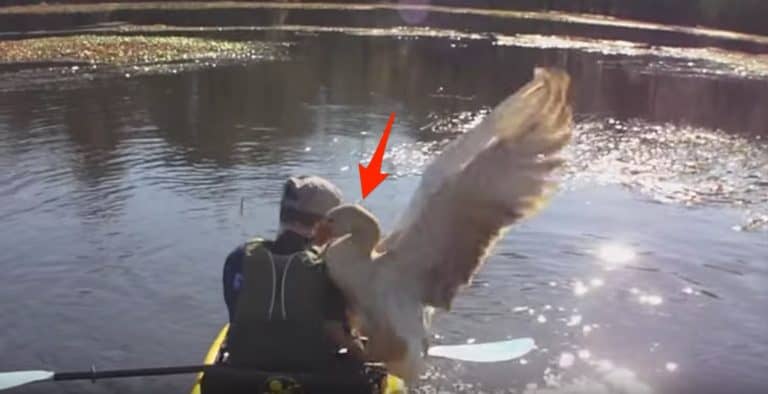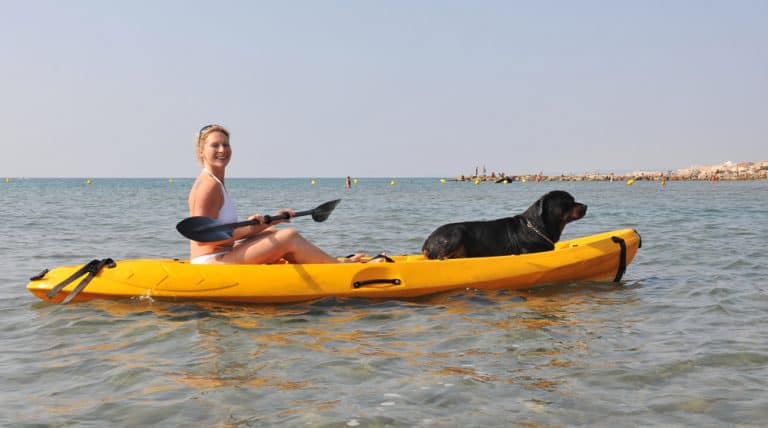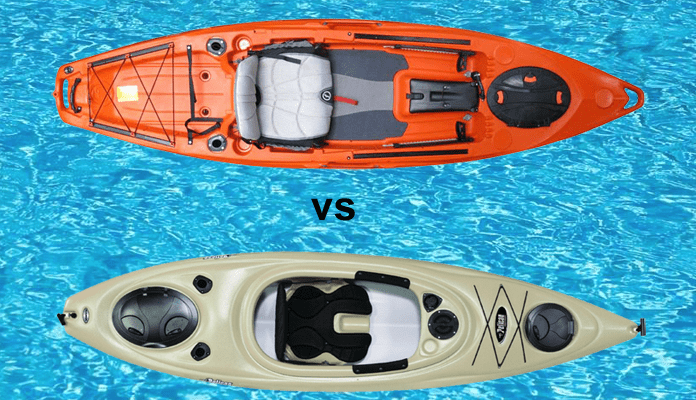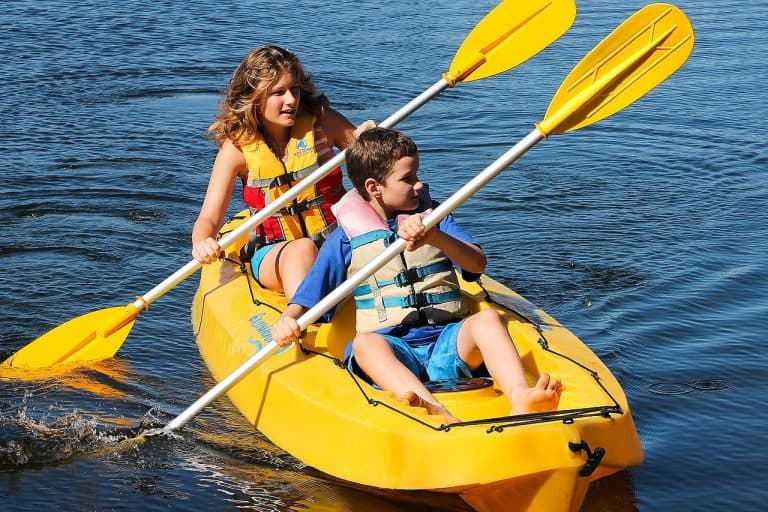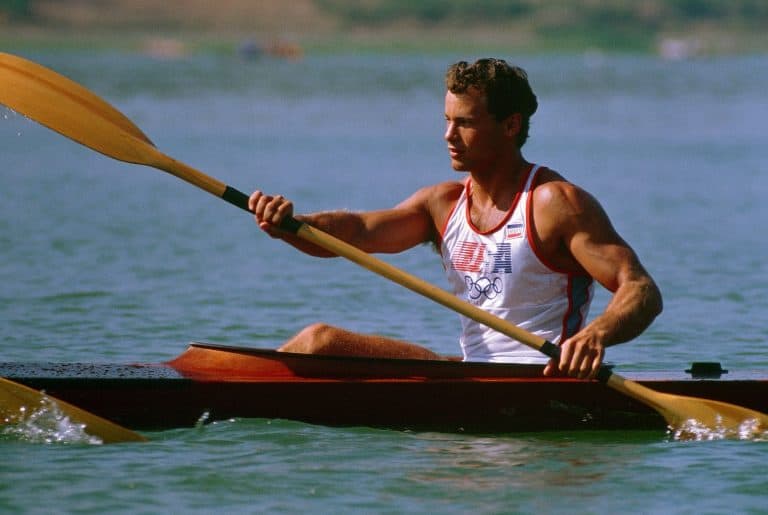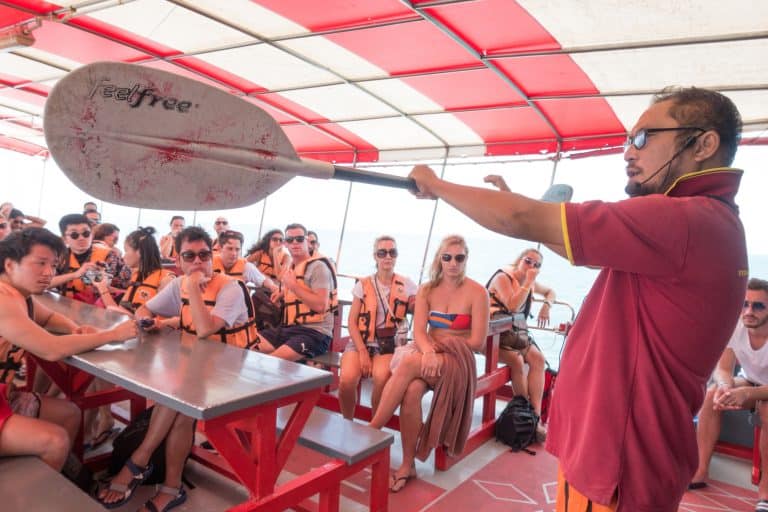Do you feel left out when going kayaking? If you don’t know the most popular pro kayak slang words and phrases, it’s natural to feel left out of the club.
Being a good kayaker, knowing these slang terms is important if you want to communicate with others in your group. They might ask you to do something, and it’s essential to understand your fellow kayakers, so you can work together as a team.
Here is the ultimate guide to kayaking slang so you can talk like a pro.
Kayak Slang 101 – Talk Like A Pro
Backstroke
STEKLO/Shutterstock.com
The backstroke, also called the reverse stroke or reverse paddle, is an essential kayaking technique. You can use it to go backward instead of forward, which can be critical if you see danger ahead and need to go back.
Baja Sleigh Ride
A Baja sleigh ride might sound like fun, but it’s usually unintentional. It happens on kayak fishing trips when you catch an extremely large fish that doesn’t want to give up.
The fish may end up pulling your kayak around and around, which is the Baja sleigh ride.
Base Layers
Arturs Budkevics/Shutterstock.com
Base layers are the layers of clothing that you wear under your other clothes.
A base layer is usually made of synthetic materials, which wick away moisture and keep you warm. In hot weather, it will keep you cool.
Kayakers often sweat a lot, making base layers important.
Bearing
Your bearing is the direction you are heading. To get your bearings is to figure out which direction you are going.
Beater
A beater is someone who goes kayaking in waters that are too difficult for them. They like to go beyond their skill level, even when they shouldn’t.
As a result, they often end up falling into the water and getting a beatdown. That usually leads to some laughs for the rest of the group.
Bony
marekuliasz/Shutterstock.com
Bony waters are shallow waters with a lot of rocks or other sharp things sticking out. It’s best to avoid such waters.
Boof
Eder/Shutterstock.com
To boof a kayak is to propel it over a ledge or waterfall. Only do this if you have the proper skill and expertise.
It’s called boofing because of the sound your kayak makes when it lands flat on the water after you propel it over the ledge.
Booties
Booties are neoprene boots that fit your feet perfectly. They’re great for kayaking, as they keep your feet dry and warm.
Bootie Beer
Bootie beers are punishments for swimming. When going in a group, everyone is expected to stay in their kayaks.
That’s why everyone should have float bags in their kayaks. However, there will inevitably be that one kayaker who forgets to take one or thinks they are too good for float bags.
If they end up falling in the water and capsizing, their teammates will have to bail them out. As a punishment, the group punishes them by pouring beer into their booties and forcing them to drink from them.
Of course, it’s all in good fun. It’s not a real punishment – who can say no to beer?
It’s just a traditional way of expressing disapproval in a fun way without ruining the vibe.
Carping
Carping is a verb, but it originates from the noun – the fish. Carping happens to inexperienced kayakers who take on more than they can chew.
When you fall into turbulent waters and get submerged, you’ll naturally try to pop above the water to catch a breath of air. That’s called carping.
Unfortunately, the relief may not be long-lasting, and your friends might have to come bail you out.
CFS
CFS stands for cubic feet per second. It’s the measurement that we use in the United States to measure the flow of water – how many cubic feet of water flow past a certain point per second.
Outside the United States, kayakers may use cubic meters per second to measure the volume of water flowing past a point at any given time.
Chasing Rain
Kayakers chase rain after heavy rainfall in the area that causes local creeks, brooks, and rivers to flood.
Normally, many of those waterways would not be suitable for kayaking due to their shallow depths. However, after heavy rain, you can finally take the opportunity to kayak on them.
However, you have to be quick – otherwise, the floods will subside, and the water level will go down, hence the term chasing the rain.
Kayakers may have groups on social media that they use to figure out which creeks and rivers are flooded and suitable for chasing rain.
Chunder
Trust me, you don’t want to chunder. Chunder is another term for disaster, carnage, or an all-out brutal beatdown.
When you chunder, mayhem ensues. You may get ejected from your kayak in terrible waters, and your kayak may get all banged up.
Church
Dudarev Mikhail/Shutterstock.com
A church is a perfect stretch of water, offering a perfect kayaking experience. It’s almost transcendent in nature.
Cockpit
The cockpit is the part of the kayak that you sit in.
Dawn Patrol
Vitalily/Shutterstock.com
People on dawn patrol are dedicated kayakers. They wake up right before dawn and head to the river to get all their gear set up so that they can start kayaking as soon as it gets light outside.
Dawn patrollers might have jobs to get to later in the morning, but they’re not going to let that get in their way of kayaking!
watcher fox/Shutterstock.com
Deck
The deck is the top of the kayak.
Dirtbag
Roger.Rondon/Shutterstock.com
A dirtbag in kayak slang doesn’t mean the same thing it means in everyday slang. In fact, it has a somewhat positive connotation.
In kayak slang, a dirtbag is someone with no job who spends their entire day kayaking. People usually envy the dirtbag, as they have no commitments or work responsibilities to prevent them from kayaking.
Drybag
Eebenezer/Shutterstock.com
A drybag is a type of bag that kayakers use to keep their belongings dry while kayaking.
Drytop
A drytop is a type of jacket that keeps the kayaker dry. It usually covers the entire upper body, with latex gaskets on the wrists.
Eddy
An eddy is a unique situation. It’s caused by obstacles in the river, which block the current and force the current to flow around the obstacles.
That leaves space for water to flow upstream, opposite the current. That’s an eddy.
You can use an eddy to take a rest from kayaking, whether you simply need to rest your arms from all the exercise or you are waiting for friends.
However, because the two currents collide in the eddy, which creates a lot of turbulence, getting in and out of the eddy can be tricky. That’s why you need experience and skill to use eddies properly.
Eskimo Roll
Hristo Uzunov/Shutterstock.com
An Eskimo roll is a technique that involves righting a kayak that has capsized. You can use a paddle or body motion to right the kayak.
These days, calling it an Eskimo roll is often considered insensitive. Instead, you can call it a kayak roll, but you will still hear some kayakers refer to it as an Eskimo roll.
You may also hear some kayakers refer to it as a combat roll. They all mean the same thing.
Ferry
Ferry is a verb in this case. It refers to kayaking across a current instead of flowing with the current.
Ferrying requires skill and expertise, and you shouldn’t attempt it in a strong current unless you are confident in your skills.
Foot Braces/Foot Pegs
Foot braces are plastic braces on your kayak for your feet. They may be adjustable, and they allow you to firmly position your feet while kayaking, so you can put more strength and energy into paddling.
They may also be called foot pegs.
Gnarly
A gnarly stretch of water is one that is difficult, rocky, or otherwise sketchy. You might also hear people refer to it as “kayaking the gnar.”
GORB
SN040288/Shutterstock.com
Your GORB is your Good Old Rafting Buddy. It’s important not to confuse it with the Irish slang word gorb, which isn’t an abbreviation of anything and refers to a glutton or someone who eats like a pig.
In other contexts, gorb can refer to a ladies’ man – a male who sleeps with many females.
Grab Handles
Grab handles are the handles located on the bow and stern of the kayak. You may also tie ropes around those parts to make grab ropes.
You can use your grab handles when carrying, or porting, your kayak.
Hair Boater
Janossy Gergely/Shutterstock.com
A hair boater is a kayaker who pushes their limits. However, a hair boater is not like a beater.
While a beater is an inexperienced kayaker who takes on waters clearly not meant for them, a hair boater is highly skilled and has a lot of experience under their belt.
Their specialty is picking sketchy waters that are often steep or otherwise dangerous. You’ll be amazed at what the hair boater is capable of; hair boaters typically also paddle furiously and aggressively.
Hairy Ferry
As I mentioned above, to ferry is to kayak across or even upstream instead of alongside the stream. A hairy ferry is when such ferrying goes wrong, and you find yourself in a hairy, unwanted, and potentially dangerous situation.
Huck
Ammit Jack/Shutterstock.com
Huck is a verb that refers to waterfall kayaking – kayaking over a waterfall. While many kayakers dream of hucking, it can be dangerous if you don’t know what you’re doing.
J-cradle
A J-cradle is a type of rack that you put on top of your car for transporting kayaks. It’s called that because it is shaped like a J.
Keel
The keel is a strip that runs on the underside of your boat, along the center. It can also be a verb – to keel over is to have that ridge get caught on a rock, which will cause your kayak to capsize.
Lee
Lee isn’t a person. Instead, it’s a small area that offers shelter from the wind and rain, where you can take refuge if you feel cold due to the wind.
Limbo Log
A limbo log is a log or tree that fell down and is obstructing the waterway. However, it is high enough for you to bend down, without getting out of your kayak, and simply paddle under it.
Manky
A manky stretch of water looks quite dangerous. It might have lots of protruding rocks or a very strong current.
In any case, you don’t want to risk going into manky waters.
Personal Flotation Device
A personal flotation device, or PFD, is another term for life jacket. It’s the most important piece of safety equipment you can have, and you should always wear it when kayaking, even if you are a good swimmer.
Pogies
Pogies are mittens that you attach to the paddles when kayaking in the autumn or winter. They help keep your hands warm, but since they are attached to the paddle, they give you more freedom and flexibility than mittens you keep on your hands.
For example, if you need to look at your phone’s compass, you’d need to take off your mittens if you were wearing them. If you use pogies, you can simply slide your hands out of them.
Porting
To port a kayak is to physically carry it around an obstacle or even a rapid. You’ll need to get out of your kayak and carry it either in shallow water or on the riverbank.
It might seem a bit embarrassing to port a kayak, but don’t let it get to you. It’s not always a sign of laziness; sometimes, it just means that you can recognize your own skill levels and don’t want to get into anything dangerous.
Punching a Hole
Just like you can boof over a waterfall, you can boof over a hole if it is not too large and you have the skill for it. Alternatively, you can navigate a hole by punching it.
Reading the Rapids
Reading the rapids is the act of analyzing a rapid before navigating it. If you read the rapid and determine that it is too dangerous, you should avoid it altogether.
You can also read and run. Reading and running is when you read the rapids without even getting out of your kayak, determine the best way to navigate them, and then immediately run the rapid.
Scouting the Rapids
On the other hand, scouting the rapids involves getting out of your kayak to read the rapids.
Send It!
If someone yells at you to “send it,” they’re encouraging you to kayak a certain stretch that you’re hesitant about. Sometimes, taking their advice isn’t really the best idea, but if you feel like you’re up for it, go for it.
Slide
On steep rivers, the river might flow over a sloped rock, creating a slide.
Smiling Hole
A smiling hole is one that has its ends angled upstream. When you look at it from above, as if in a helicopter, it will seem as if it is smiling.
A smiling hole is a good hole, because it will feed you out towards the current.
The opposite of a smiling hole is a frowning hole. A frowning hole is a bad hole, because it feeds out opposite the current, which will cause you to get stuck.
Always try to avoid frowning holes, but don’t be afraid to navigate smiling holes.
Then there are the holes that are closed, such as those angled not downstream but against a wall. Those are tricky holes to navigate and are best avoided altogether.
Spring Melt
Spring melt happens when icy and frozen lakes have just fully melted. A lot of kayakers try to go kayaking during spring melt.
If you hit the rapids too early, though, you might still encounter frozen pieces of ice, which can be dangerous. Instead, you need to catch the spring melt after all the ice has melted while the waters are still flooded.
Strainer
Simon Annable/Shutterstock.com
Strainers are low-hanging branches from trees overhead that dip underneath the water. They act like strainers, letting the water through but stopping kayakers.
You must always avoid strainers, as there’s no way to go under them. The only way to avoid them is to go around them.
Swamp
Your kayak will swamp when it gets filled with water. When that happens, you are at a greater risk of sinking.
As such, you will need to empty the water from your kayak. The best way to do that is to use a bilge pump, which can be either manual (you have to pump out the water with your hands) or automatic.
The automatic bilge pumps use a motor, which makes them a lot heavier.
Siphon
A siphon is a small hole in the river that is too small to pass through with your kayak. Usually, a siphon is also too small to swim through, even though it’s big enough for water to pass through.
Sweeper
Sweepers are low-hanging branches that don’t touch the water but come very close. They are dangerous for kayakers because they can sweep you out of the water.
It’s important to slow down when you see a sweeper and try to maneuver around it.
Swim Beer
When one of your kayaking buddies bails you out after you fall in the water, you are supposed to buy them a beer as a token of gratitude. That is called a swim beer.
Tricky Woo
Tricky Woo is a type of freestyle kayaking that only advanced kayakers can do. You need to know how to double-pump and split-wheel, but the entire technique would require an entirely new article to explain.
Instead, you can check out this tutorial here.
Trip Leader
The trip leader is the guy or gal who organizes the trip. They could be your GORB (Good Old Rafting Buddy), but it’s usually someone who’s passionate about kayaking and wants to make sure the trip gets done and your plans don’t fall through.
Without the trip leader, it’s unlikely you’d go on as many successful kayaking trips. The trip leader researches kayaking spots in advance, makes sure to set up a time that works for everyone, and helps get everyone on board to go out kayaking.
Turkey Wave
A turkey wave is a type of wave that crashes inconsistently and sporadically. It can gobble you up if you are not careful, hence the name.
Wallace
Nicky Rhodes/Shutterstock.com
A wallace is a beatdown, and to get wallaced is to get beat down. It usually happens to inexperienced kayakers, especially those who try to take on situations that they don’t have the skills for.
Weekend Warriors
Weekend warriors have 9-5 jobs. From Monday until Friday, they’re busy at the office or at whatever else they do for work.
Once the weekend comes around, though, they instantly turn into a kayaking warrior. They dedicate their entire weekends, almost every week, to kayaking.
That allows them to gain a lot of experience.
Wet Exit
You make a wet exit out of your kayak by swimming out of it into the water. A wet exit is reserved for extreme situations, such as when your kayak is about to hit a sharp rock and there’s nothing you can do about it.
Zam
The Zam is the Zambezi River. As the fourth-largest river in Africa, the Zambezi River offers many kayaking opportunities.
If someone wants to brag about an exotic place they have gone kayaking, they might say that they have kayaked the Zam. It probably makes them feel cool, but hey, it’s not like they won’t be the envy of other kayakers in the group.
Wrapping It Up
We hope you’ve enjoyed this glossary. Now you can feel cool knowing that when your new kayaking buddies use slang words, you won’t feel left out.
You can even try using some of the words in this glossary on your next trip to impress your buddies. Some of them might not even know the meaning, forcing them to ask you for an explanation!
Bookmark this guide so you can come back and refer to it at a later date. If you enjoyed it, share it with a friend!
Also, check out our beginner’s guide to kayak terminology.

